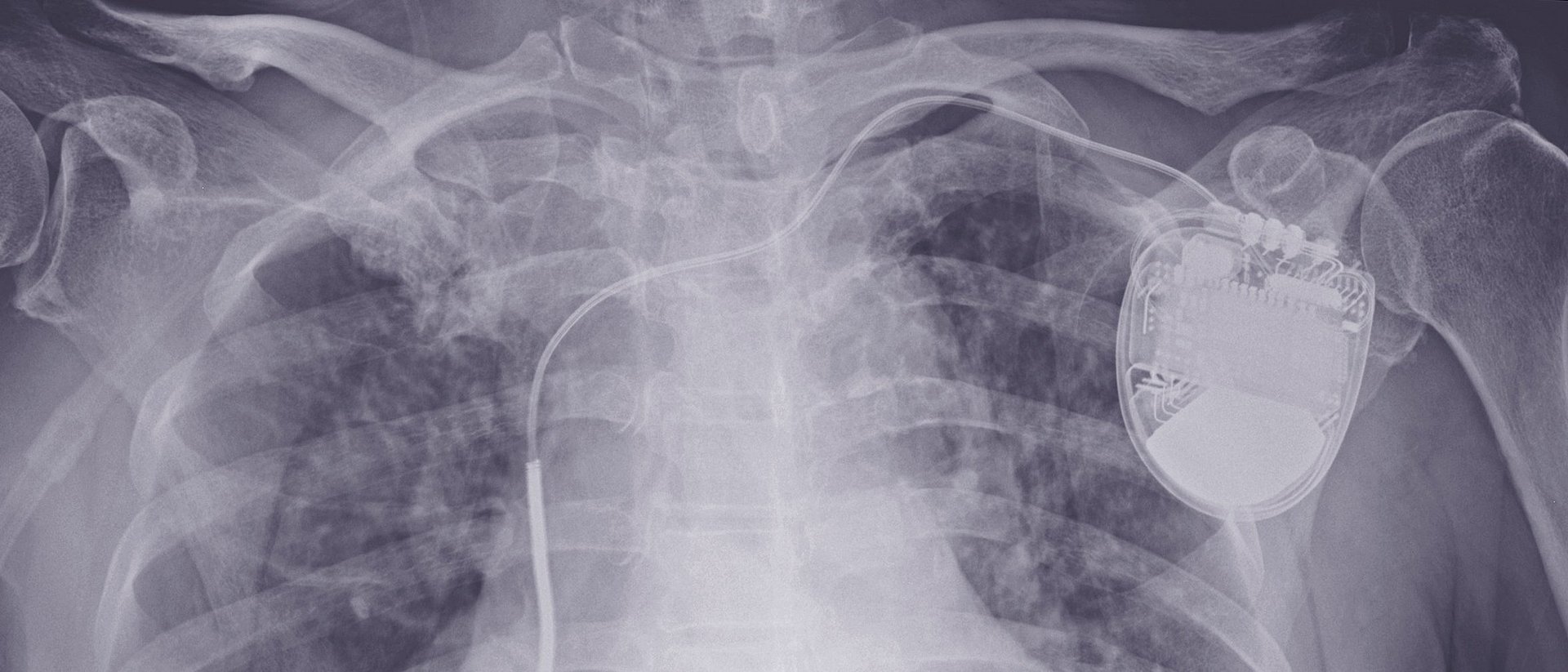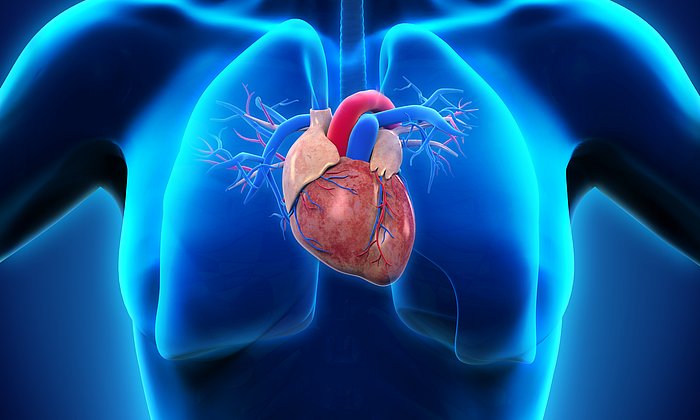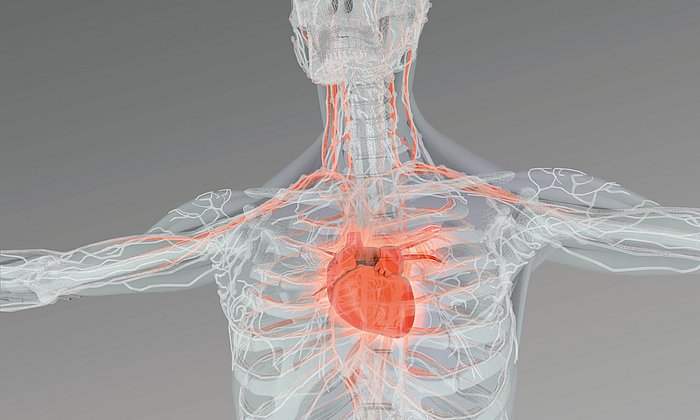ECG procedure indicates whether an implantable defibrillator will extend a patient's life
Who benefits from a defibrillator?

In heart patients with potentially life-threatening arrhythmias, a strong electrical shock applied to the cardiac muscle can reset the heart to its regular rhythm. This is precisely the task of defibrillators, which are inserted into the chest like pacemakers. Under current guidelines, physicians implant these devices as a preventive measure in patients with certain heart conditions. The procedure is performed more than 100,000 times per year in the EU. Apart from the high costs for the health care system, the devices also pose a risk: According to estimates, one in four implanted defibrillators will lead to significant complications within ten years – from infections to spontaneous electric shocks.
The EU-CERT-ICD study therefore examined the benefits of prophylactically implanted defibrillators throughout Europe. In a sub-study of the EU-CERT-ICD project, the scientists led by first author Prof. Axel Bauer (formerly LMU and currently Medical University of Innsbruck) and the two co-senior authors Prof. Georg Schmidt (TUM) and Prof. Markus Zabel (University Medical Center Göttingen) wanted to identify the patients who benefit most from the operation.
PRD: an indicator of the electrical instability of the heart
Each heartbeat consists of a sequence of excitation (depolarization) and regression of excitation (repolarization). Heart failure often leads to overactivity of the sympathetic nervous system, a part of the autonomic nervous system that is active in stressful situations. This overactivity can destabilize the repolarization of the heart, resulting in a dramatic increase in the risk of damaging arrhythmias. These dangerous instabilities in repolarization can be recognized using a relatively new ECG procedure known as periodic repolarization dynamics (PRD). “Although the procedure involves intelligent algorithms, the measurements are relatively simple,” explains Axel Bauer, who worked with Georg Schmidt to develop and validate the method.
In their prospective study, the scientists tracked 1,371 patients who met the current criteria for the implant of a defibrillator. Of the group, 968 actually underwent the operation, while the doctors treating the other 403 patients decided against a defibrillator.
High PRD value: indicative of benefits from an implantable defibrillator
The preventive implantation of a defibrillator resulted in an overall 43 percent decrease in mortality over the subsequent four-year period. For patients with a PRD value greater than or equal to 7.5 degrees, the reduction in the mortality risk was significantly larger, at 75 percent. For PRD values below 7.5 degrees, the mortality risk was reduced by only 31 percent. “PRD could become an important decision making tool for physicians,” says Georg Schmidt, the head of the Biosignal Processing Working Group at TUM's Klinikum rechts der Isar. “With the additional information, patients who would probably not benefit from a defibrillator could be spared the risk of an implant. Instead we could focus on those whose lives would likely be extended by the device.” The results will first have to be confirmed in further studies, however, before they can be included in medical treatment guidelines. “An important step, among others, would be to conduct a study over a longer period,” says Markus Zabel, the head of the main EU-CERT study.
A. Bauer, M. Klemm, KD. Rizas, W. Hamm, L. v. Stülpnagel, M. Dommasch, A. Steger, A. Lubinski, P. Flevari, M. Harden, T. Friede, S. Kääb, B. Merkely, C. Sticherling, R. Willems, H. Huikuri, M. Malik, G. Schmidt, M. Zabel, and the EU-CERT-ICD investigators, Prediction of mortality benefit based on periodic repolarisation dynamics in patients undergoing prophylactic implantation of a defibrillator: a prospective, controlled, multicentre cohort study, The Lancet (2019). DOI: 10.1016/S0140-6736(19)31996-8
For the EU-CERT-ICD study (European Comparative Effectiveness Research to Assess the Use of Primary Prophylactic Implantable Cardioverter Defibrillators), patients have been examined at 44 centers in 15 EU countries since 2014. The study was funded by the European Union.
Technical University of Munich
Corporate Communications Center
- Paul Hellmich
- paul.hellmich@tum.de
- +49 (0)89 289 22731
- presse@tum.de
- Teamwebsite
Contacts to this article:
Prof. Dr. Georg Schmidt
Technical University of Munich
Klinikum rechts der Isar
Klinik und Poliklinik für Innere Medizin I, Kardiologie
Tel: +49 89 4140 7979
gschmidt@tum.de
Univ.-Prof. Dr. Axel Bauer
Medical University of Innsbruck
Direktor der Universitätsklinik für Innere Medizin III - Kardiologie und Angiologie,
Tel. +43 512 504-25621
axel.bauer@tirol-kliniken.at
Prof. Dr. Markus Zabel
University Medical Center Göttingen
Leiter des Schwerpunkts Klinische Elektrophysiologie
Tel. +49 551 3965255
markus.zabel@med.uni-goettingen.de


